- Home
- Poul Anderson
Vault of the Ages
Vault of the Ages Read online
Vault of the Ages
Poul Anderson
Five hundred years from now, rival groups battle for the contents of a vault containing remnants of 20th century civilization which could guide their society out of its primitive state.
VAULT OF THE AGES
by Poul Anderson
A Science Fiction Novel
To Mor and John
THE TIME CAPSULE
Archaeologists, studying the past, are handicapped by the fact that relics are usually few and in poor condition. Often, one is not even sure where to look for them. Out of such finds—from tombs, ruined cities, swamps, deserts, and any other place where men of the past have left some trace of themselves—the archaeologist tries to build up a picture of these men’s lives and civilizations. But there are great gaps in our knowledge and probably always will be. For instance, we cannot yet read the inscriptions left by the ancient Cretans, and so are in the dark about many features of their high civilization. We know almost nothing of their actual history, and we are not even sure who the people were that finally destroyed them. In like manner, there are many things we would like to know about the Etruscans, Khmers, Mayans, and other important nations and tribes of the past; but we have simply not found enough complete records and relics to have a good picture.
Hundreds of years from now, our own modern civilization may be as remote and mysterious as these cultures. As in this story, where I have laid the scene five hundred years in the future, after our present-day civilization was destroyed by the misuse of the atom bomb, the wise men of that day would be able to learn what we were like from time capsules.
As to what a time capsule is, many definitions could be given, but let us stick to the facts.
“Time capsule” is a coined name for a container of some kind which is filled with pictures, models, and other records which give a view as complete as possible of the world of the time—how the people lived, what they ate and wore and knew and thought. The container is then buried in a safe place for scientists of the far future to dig up.
The idea of leaving tokens for the future is not entirely new. Such inscriptions as the great one on the Rock of Behistun, in Asia Minor, were made so that all men to come would know of the king who had ordered it. When a Chinese emperor in the third century b.c. tried to destroy certain texts, scholars hid copies in the hope that later generations would find them.
This hope was realized, and so such writings as the Confucian Willow Books were saved for posterity. However, no such systematic attempts as we are discussing were, to my knowledge, made before the twentieth century. This is probably because of the difficulty of reconstructing the past, and because only since Schliemann’s time has there been any real science of archaeology.
I believe there are only two time capsules in existence—one at Atlanta, Georgia, and one in New York City, which is the best known.
This time capsule was made by the Westinghouse Company and was buried in 1938 on the site of the World’s Fair of 1939. It was meant to be dug up again in five thousand years, in a.d. 6938. A Book of Record was prepared and 3,650 copies printed on permanent paper with special ink. This Book of Record describes the contents, the exact location, and the purpose of the time capsule. It also contains a request that it be translated into new languages as they appear. However, in case this is not done, the book contains a carefully worked-out phonetic and linguistic key to the English language, from which any trained linguist can reconstruct our tongue. One copy was placed in the time capsule itself; the rest, distributed to libraries, museums, monasteries, lamaseries, temples, and other safe places around the world. It is hoped that some few copies, at least, will last the full five thousand years. Even if none does, the capsule will probably be found someday, for the site of New York City will always be of great interest to future archaeologists.
The capsule itself is a torpedo-shaped vessel, seven and one-half feet long and eight and three-eighths inches in diameter, made of cupraloy (a very resistant alloy of copper) one inch thick. Inside, it is lined with pyrex glass and, after being packed and the air pumped out, it was filled with humid nitrogen to preserve the contents from decay and corrosion. It was lowered fifty feet into the earth through a steel pipe to a base of waterproof concrete. Pitch was poured in around it, then a top layer of concrete, after which the pipe was cut off and pulled out and the hole was filled in. With these precautions it should be safe from vandals such as the grave robbers who destroyed much valuable material in the Egyptian pyramids; and geologists have assured us that in five thousand years the land will not have sunk below the sea. The time capsule should easily last its appointed period.
The shell contains messages to the future from prominent men, a copy of the Book of Record and one of the Bible, and various technical aids to translators. There are numerous articles of common usefulness, pleasure, clothing, and vanity, such as a watch, hats, games, money, seeds, pipe and tobacco pouch, and so on. There are also a magnifier and a viewer for the microfilmed texts and the newsreel. This newsreel is a sound film running about fifteen minutes and showing characteristic or significant events of the year 1938—scenes from military maneuvers and the Sino-Japanese War then taking place, a fashion show, a Presidential address, and so on.
On microfilm, there are a great many texts which are meant to give as complete a picture as possible of the world of 1938. There are photographs of industrial processes and works of art; books and encyclopedic articles describing what we knew and did and thought; some outstanding novels and dramas of the twentieth century; and even comic strips.
The entire capsule is, indeed, a treasure chest of information about our own lives and times, not only the great events and discoveries, but the small details of everyday living.
The one at Atlanta is, as far as I know, quite similar, though it contains more models of machinery, houses, and so forth. Probably more time capsules will be laid down from time to time in the future.
As the repository described in this book is not entirely like these, I have called it a “time vault” instead. It was not meant purely for wise men or scientists, but for the common men of the future, whom the maker foresaw would have sunk back to a barbaric state of life. He wanted them to find and enter the vault easily, and use its contents as a guide to rebuilding civilization.
To facilitate this, he put his relics in a large cellar or vault underground, lined with concrete so it would not collapse, and left a door above ground for anyone who wished to enter. He did not microfilm his books, since these people of the future would probably not understand what he had done. Instead, he left them in steel cabinets with close-fitting doors, safe from animals, insects, fire, and damp. He chose books which would be easy to read and understand, as well as more complicated ones when the simple texts had been mastered. And he left plans and models not only of the great machines we now have, such as automobiles and airplanes, but also of things which backward peoples could make for themselves right away—balloons, windmills, schooners, simple blast furnaces, and the like. It was his hope that the people of the future would go on from this to make the more powerful machines of his own time. And he left them also the great works of art, literature, religion, and philosophy, hoping that these would teach men to use the machines wisely.
P. A.
Chapter 1
WARRIORS OF LANN
The sun was low, slanting its long light through the forests to north and west, and shadows crept over the rolling green farm lands across which Carl had come riding. He saw the buildings ahead as an outlined darkness against the trees beyond, heard noises of cattle and sheep and a barking dog drift through the quiet, and felt his pony break into a trot as it smelled hay and shelter. A wandering sunset breeze ruffled C
arl’s long hair. He shaded his eyes against the light and leaned forward in the saddle, eager as his horse. It had been a long day’s ride.
The dog came running from the farmyard and danced yammering around him as he neared the house. Carl’s hand tightened on the hilt of his sword—watchdogs often attacked on these lonely places and had to be beaten off with the flat of a weapon. This one, however, simply kept barking till the evening rang with echoes.
“You there, Bull! Quiet!”
A man stepped out of the house and the dog ran to him and was still. The man remained in the door, waiting with a spear in his hand. He was big and burly, with gray hair that reached to his shoulders and a beard that flowed over his homespun shirt. Two boys stood behind him with axes in their hands.
Carl, smiling, reined in his pony. “Greetings,” he said. “I come alone and in peace, asking a roof for the night.”
The farmer lowered his spear and nodded. “Then be welcome and stay with us,” he replied formally. “I am John, son of Tom, and a Dalesman.”
“And I am Carl, son of Ralph in Dalestown,” answered the newcomer. “I thank you for your kindness.”
“Ralph—in Dalestown!” John’s eyes widened. “Then you must be the son of the Chief.”
“Yes, I am,” Carl said, swinging out of the saddle.
They stood for a moment looking at him. Carl was sixteen years old, but large and strong for his age, with ruddy brown hair, and sun-tanned face and wide-set brown eyes. He wore the usual clothes of a traveler: leather breeches, dyed wool shirt, short homespun cloak, and moccasins. Sword and dagger were belted at his waist and a round shield hung from his saddle beside a bow and quiver. He had a canteen of water but no other supplies; in the wilderness there was plenty of game, and where men lived, a farmer would always give him food and lodging for the sake of company and news.
“Come,” one of the boys said eagerly. “I’ll show you to the barn and then we’ll eat and talk.”
He was the elder of John’s two sons, a lean, red-haired, freckle-faced lad of about Carl’s age.
His brother, who followed them, was perhaps a year younger, short and stout and blond. “I am Tom,” said the older boy, “and this is Owl.”
“Owl?” asked Carl.
“His real name is Jim,” said Tom, “but nobody ever calls him anything but Owl. He looks like one, doesn’t he?”
“It is because I am so wise,” smiled his brother.
The farm buildings were long and low, made from rough-hewn timbers chinked with clay and moss. Within the barn there were several horses and cows, and a twilight thick with the rich smell of animals and hay. Tom led Carl’s pony to a vacant stall while Owl brought water.
“You have a big place here,” said Carl. “I wouldn’t have thought it. You live right on the edge of the great forest and the border of the Dales.”
“Why shouldn’t we have a good farm?” asked Tom.
“Well—a place like this would tempt raiders, I should think.”
“There are none,” said Owl. “The woods-runners around here were driven away a hundred years ago. You should know that.”
“I do,” answered Carl gravely. “But there are worse than woods-runners—and they’re on their way.”
“You mean the Lann.” Tom’s voice grew flat. “We can speak of them later.”
Carl shrugged, but there was a sudden bleakness in him. It had been this way all the time, everywhere he went. So few would believe the story, so few could rise above the narrowness of their lives and see that the Dales faced a threat beyond their worst dreams.
He clamped his mouth shut and helped care for the pony. When the three boys came out, the sun had set and twilight stole from the east, rising like mist between the high trees. They walked across the muddy yard toward the cheerful fire-glow of the house.
The long room inside was bounded by curtained beds at one end and a stone hearth at the other. John’s wife, a tall woman in the long-skirted dress of the Dales, was cooking supper there. She smiled at Carl and greeted him in a friendly way, but he saw the worry in her face and knew that she was not altogether deaf to the stories of the Lann. Besides John, who sat at the plank-table smoking a corncob pipe, there were two young men who were introduced to Carl as Am and Samwell, workers on the farm.
It was a handsome and comfortable house, thought Carl, letting his eyes travel around it. The soft light of home-dipped tallow candles fell on skin rugs, on a loom with a rich, half-woven tapestry stretched across it, on pots and bowls of baked clay and hammered copper. It slanted over weapons racked against one wall and the weapons threw back the light in a fierce iron blink, deflecting it off a faded picture of a man, one of the marvelous works which must have been handed down since the Day of Doom. And all this could go up in flame when the Lann arrived!
The Dalesmen did not think it polite to talk of serious matters before a guest had been fed, so they spoke of weather and animals and neighborhood gossip.
Unreal, thought Carl, swallowing his impatience. They sat and gabbled about rain and crops when the storm of conquest even then roared down from the north. The food, when at last it was served, was tasteless in his mouth.
After the dishes had been cleared off and the fire built up against the cool dampness of early summer night, John gave him a shrewd glance across the table. A wavering red light danced through the room, weaving a pattern of huge rippling shadows in the corners from which Arn looked superstitiously away. The fanner’s eyes gleamed out of a face that was half in darkness, and he puffed a blue cloud of smoke into the air.
“And how are things in Dalestown, Carl?” he asked.
This was the time to speak! “The men are gathering,” answered Carl, choosing his words slowly, with care. “In the east and west and south the Dalesmen have heard the war-word of their Chief and are sending their fighting men to join him. Dalestown has grown noisy with men and weapons. Only from this part of our northern lands have no men yet come.” He raised his eyebrows. “You will march soon, of course?”
“We will not march at all,” said John calmly. “The men of the northern Dales are staying at home.”
“But—” Carl checked his words. After all, this was no surprise; Ralph’s messengers had brought back the answer of these landholders already. Finally he said slowly, “But you are in the very path of the invaders.”
“Perhaps,” replied John. “And in that case, should we abandon our homes to their plundering, leave our women and children and animals unshielded while all our warriors are at Dalestown?”
“My father,” said Carl desperately, “is gathering all the men of the tribe together so he can have an army of proper size with which to meet these Lann and drive them back where they came from. Do you few border dwellers expect to stop the enemy alone?”
“We stood off the woods-runners long ago,” said John. “I don’t think the Lann will be any worse.”
“But they are!” cried the boy. “We know!”
John raised his brows. “And what do you know of the Lann? I thought there was no traffic northward.”
“Very little,” said Carl. “We get what we need for ourselves in the Dales, and our traders carry what extra we have south to get fruits and tobacco or east for fish and salt. Still, travelers have gone into the cold lands from time to time, and they have told us that the tribes living there are poor and backward, but very fierce. Someone brought word back a couple of years ago that these tribes had united under one Chief and were talking of coming south.”
“Why should they do that?” asked Tom. “It’s a long way from their homes to ours.”
“We live better,” said Carl. “Our land is rich, our forests are full of game and timber, our ancient cities yield so much metal that we can even trade it with other people—oh, I can see where these northerners, these Lann as they call themselves, would envy us. Their own scouts and explorers have visited us now and then, you know.”
He ran a hand through his hair. “Also,” he wen
t on, “this is a matter which I do not understand very well, but some say the world is getting colder. Old men all tell how the summers were wanner and the winters shorter in their youth, that their grandfathers had told them things were still better. Old Donn, the High Doctor at Dalestown, who keeps the ancient wisdom, says that the wise men before the Doom knew of such changes too. Anyway,” he finished lamely, “if the weather really is getting colder and stormier, it would strike the north first and hardest. They have had several bitter years and thin harvests, my father’s spies have told, and are themselves harried by desperate raiders from still farther north. So all in all, it is easy to see that the Chief of the united Lann may want to lead a host which can conquer the south and take its lands.”
“That would take a great army,” said Owl.
“It is a great army,” said Carl grimly.
“But why should they fall on us?” asked John. “There are weaker tribes, easier prey.”
“I don’t know,” said Carl, “but my father thinks it’s just because we Dalesmen are the largest and strongest of the tribes that they want to overrun us first. Once we are beaten, our neighbors will have no chance.” He scowled. “Even so, those other tribes won’t join with us. They’re afraid to stir up the anger of the Lann. We stand alone.”
“And where is this northern army?” asked John.
“I don’t know,” said Carl. “Nobody does. They could be anywhere in the great hills and forests to the north, and will move almost as fast as any scout of ours could bring word of their coming. I suppose they’re scattered through the woods, so they can live off the country better, and will join forces again when they come out into the farm lands. There’ve been fights elsewhere in the northern marches between some of their advance guards and men of ours, so they must be near.”

 Security
Security The Valor of Cappen Varra
The Valor of Cappen Varra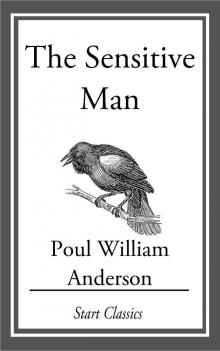 The Sensitive Man
The Sensitive Man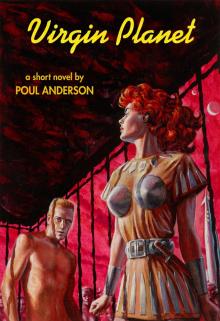 Virgin Planet
Virgin Planet To Build a World
To Build a World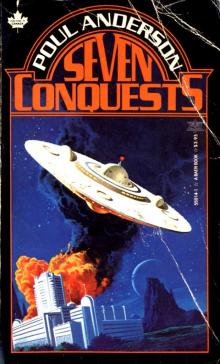 Seven Conquests
Seven Conquests Mayday Orbit
Mayday Orbit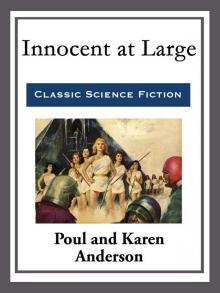 Innocent at Large
Innocent at Large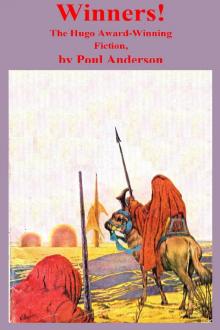 Winners!
Winners! Mother of Kings
Mother of Kings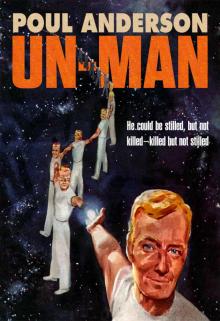 Un-Man
Un-Man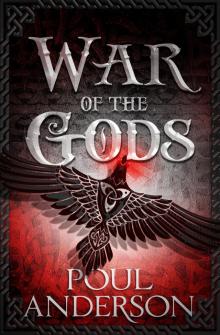 War of the Gods
War of the Gods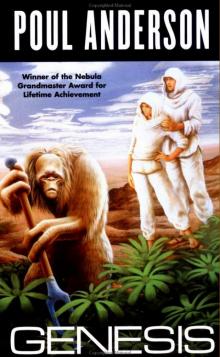 Genesis
Genesis Industrial Revolution
Industrial Revolution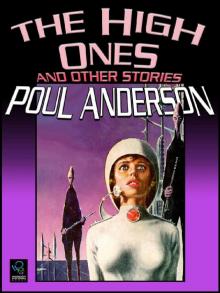 The High Ones and Other Stories
The High Ones and Other Stories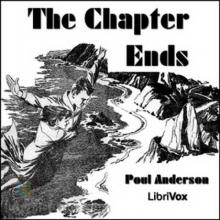 The Chapter Ends
The Chapter Ends Flandry of Terra
Flandry of Terra Starfarers
Starfarers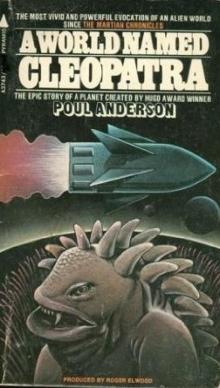 A World Named Cleopatra
A World Named Cleopatra Operation Chaos
Operation Chaos![Harvest of Stars - [Harvest of Stars 01] Read online](http://i1.bookreadfree.com/i/03/17/harvest_of_stars_-_harvest_of_stars_01_preview.jpg) Harvest of Stars - [Harvest of Stars 01]
Harvest of Stars - [Harvest of Stars 01]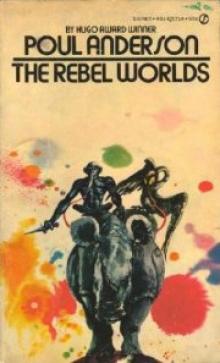 The Rebel Worlds
The Rebel Worlds Poul Anderson's Planet Stories
Poul Anderson's Planet Stories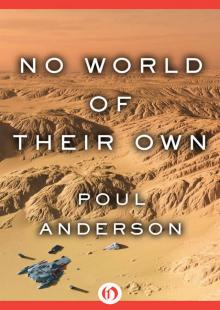 No World of Their Own
No World of Their Own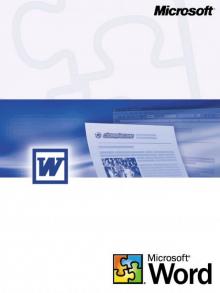 The Merman's Children
The Merman's Children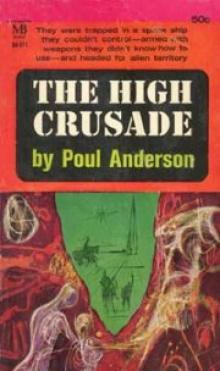 The High Crusade
The High Crusade The Stars Are Also Fire
The Stars Are Also Fire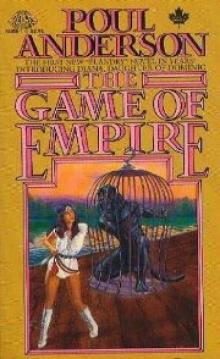 The Game of Empire df-9
The Game of Empire df-9 The Sorrow of Odin the Goth tp-7
The Sorrow of Odin the Goth tp-7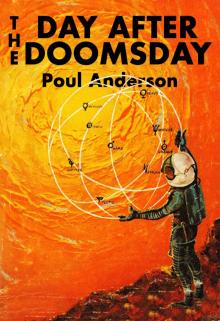 The Day After Doomsday
The Day After Doomsday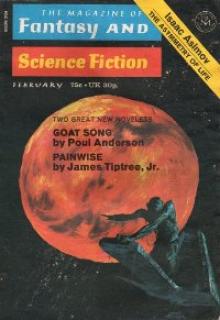 Goat Song
Goat Song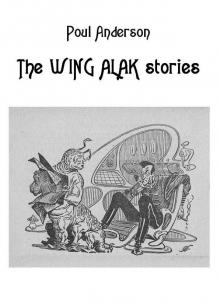 The Wing Alak Stories
The Wing Alak Stories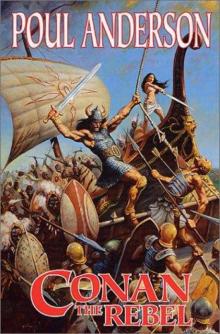 Conan the Rebel
Conan the Rebel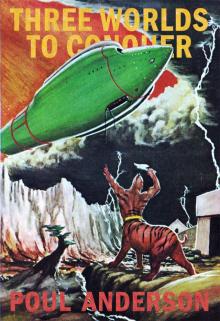 Three Worlds to Conquer
Three Worlds to Conquer Iron mw-1
Iron mw-1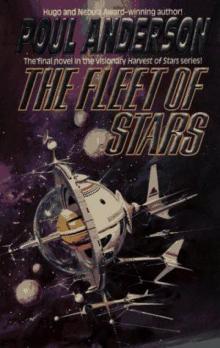 The Fleet of Stars
The Fleet of Stars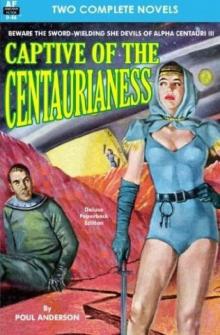 Captive of the Centaurianess
Captive of the Centaurianess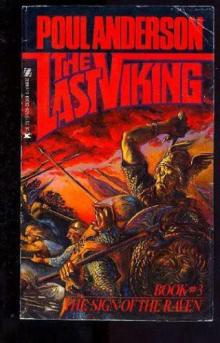 The Sign of the Raven
The Sign of the Raven The Boat of a Million Years
The Boat of a Million Years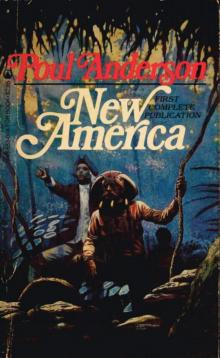 New America
New America Satan's World
Satan's World Gallicenae
Gallicenae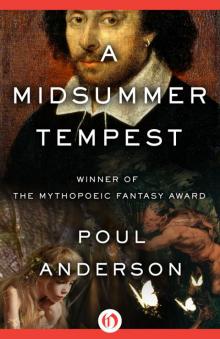 A Midsummer Tempest
A Midsummer Tempest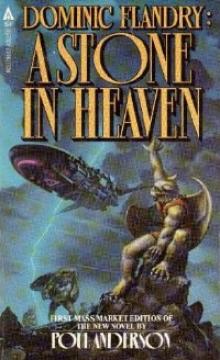 A Stone in Heaven
A Stone in Heaven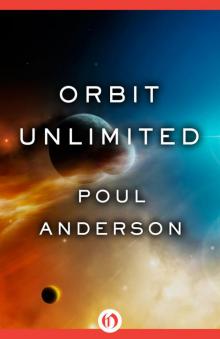 Orbit Unlimited
Orbit Unlimited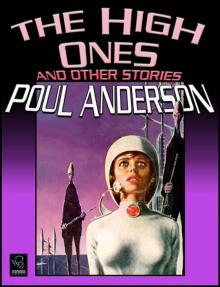 The Corkscrew of Space
The Corkscrew of Space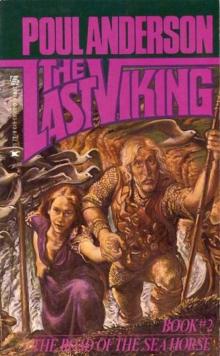 TLV - 02 - The Road of the Sea Horse
TLV - 02 - The Road of the Sea Horse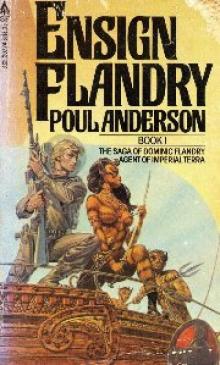 Ensign Flandry df-1
Ensign Flandry df-1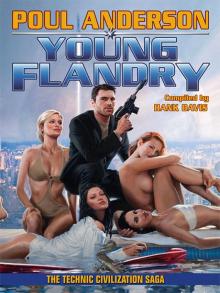 Young Flandry
Young Flandry The Broken Sword
The Broken Sword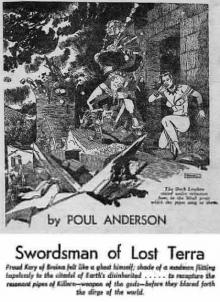 Swordsman of Lost Terra
Swordsman of Lost Terra Orion Shall Rise
Orion Shall Rise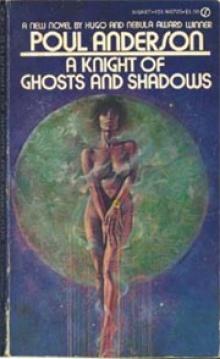 A Knight of Ghosts and Shadows df-7
A Knight of Ghosts and Shadows df-7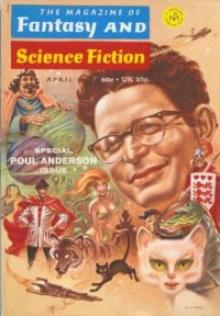 The Queen of Air and Darkness
The Queen of Air and Darkness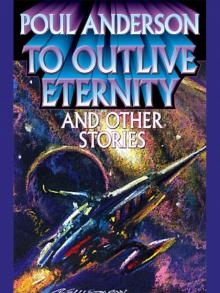 To Outlive Eternity
To Outlive Eternity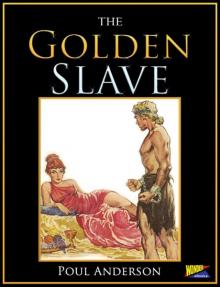 The Golden Slave
The Golden Slave Dahut
Dahut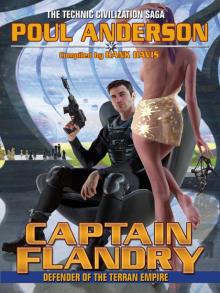 Captain Flandry: Defender of the Terran Empire
Captain Flandry: Defender of the Terran Empire Un-Man and Other Novellas
Un-Man and Other Novellas David Falkayn: Star Trader (Technic Civlization)
David Falkayn: Star Trader (Technic Civlization)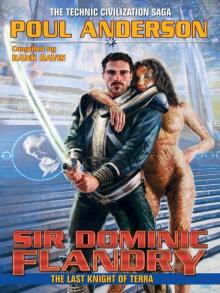 Sir Dominic Flandry: The Last Knight of Terra
Sir Dominic Flandry: The Last Knight of Terra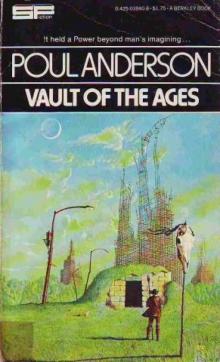 Vault of the Ages
Vault of the Ages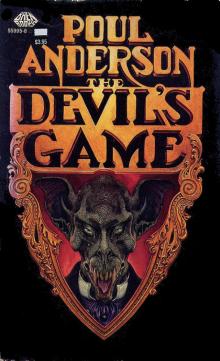 The Devil's Game
The Devil's Game A Stone in Heaven df-12
A Stone in Heaven df-12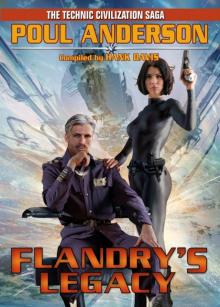 Flandry's Legacy: The Technic Civilization Saga
Flandry's Legacy: The Technic Civilization Saga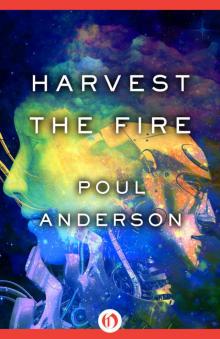 Harvest the Fire
Harvest the Fire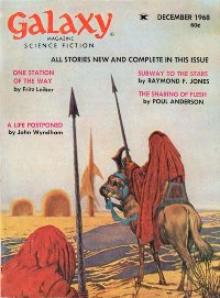 The Sharing of Flesh
The Sharing of Flesh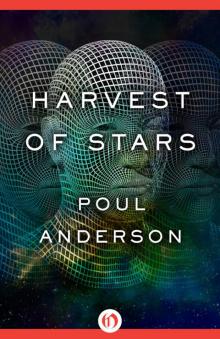 Harvest of Stars
Harvest of Stars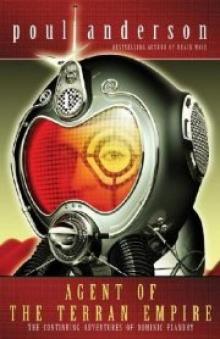 Agent of the Terran Empire
Agent of the Terran Empire World without Stars
World without Stars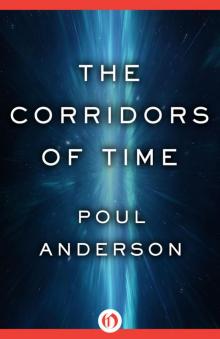 The Corridors of Time
The Corridors of Time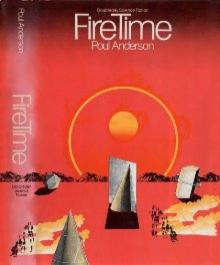 Fire Time gh-2
Fire Time gh-2![The Stars are also Fire - [Harvest the Stars 02] Read online](http://i1.bookreadfree.com/i1/04/01/the_stars_are_also_fire_-_harvest_the_stars_02_preview.jpg) The Stars are also Fire - [Harvest the Stars 02]
The Stars are also Fire - [Harvest the Stars 02]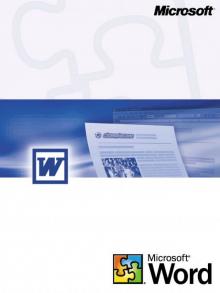 We Have Fed Our Sea
We Have Fed Our Sea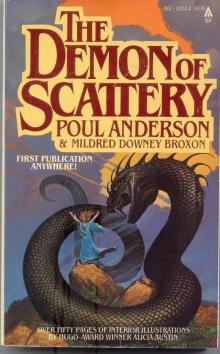 Demon of Scattery
Demon of Scattery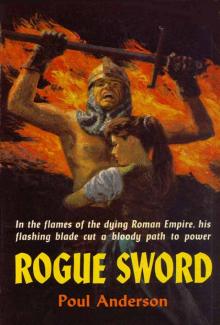 Rogue Sword
Rogue Sword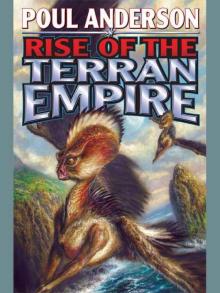 Rise of the Terran Empire
Rise of the Terran Empire The Only Game in Town tp-4
The Only Game in Town tp-4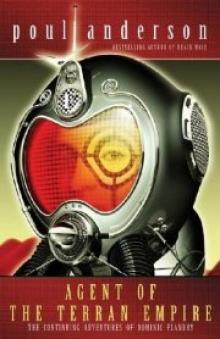 Agent of the Terran Empire df-5
Agent of the Terran Empire df-5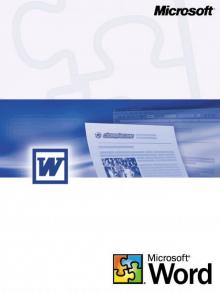 The Day Of Their Return
The Day Of Their Return Brain Wave
Brain Wave The Day of Their Return df-4
The Day of Their Return df-4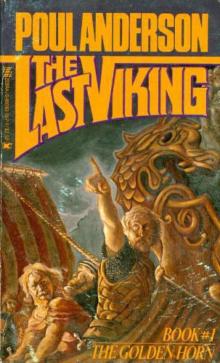 The Golden Horn
The Golden Horn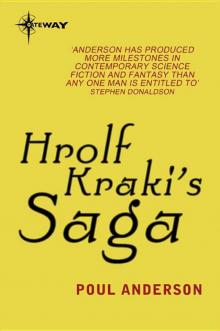 Hrolf Kraki's Saga
Hrolf Kraki's Saga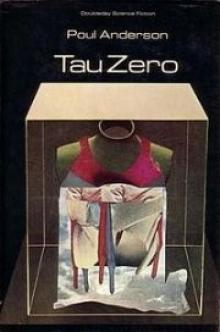 Tau Zero
Tau Zero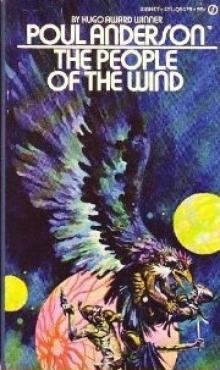 The People of the Wind
The People of the Wind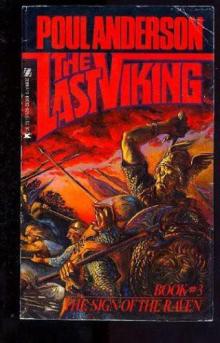 TLV - 03 - The Sign of the Raven
TLV - 03 - The Sign of the Raven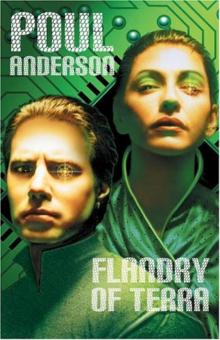 Flandry of Terra df-6
Flandry of Terra df-6 Gibraltar Falls tp-3
Gibraltar Falls tp-3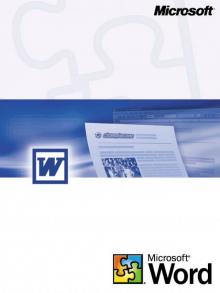 The Game Of Empire
The Game Of Empire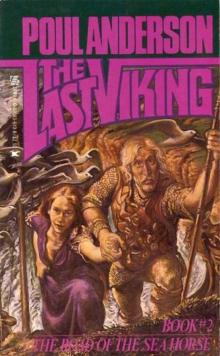 The Road of the Sea Horse
The Road of the Sea Horse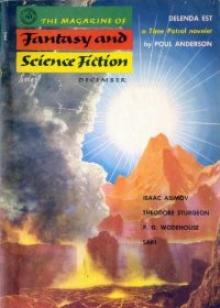 Delenda Est tp-5
Delenda Est tp-5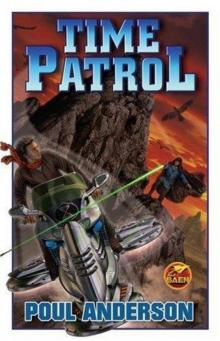 Time Patrol
Time Patrol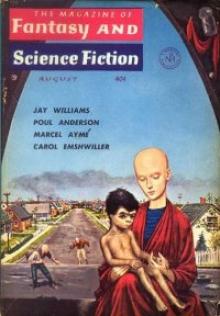 Brave To Be a King tp-2
Brave To Be a King tp-2 The Man Who Counts nvr-1
The Man Who Counts nvr-1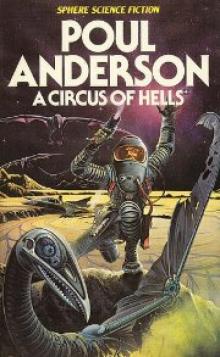 A Circus of Hells df-2
A Circus of Hells df-2 The Rebel Worlds df-3
The Rebel Worlds df-3 The Unicorn Trade
The Unicorn Trade Lord of a Thousand Suns
Lord of a Thousand Suns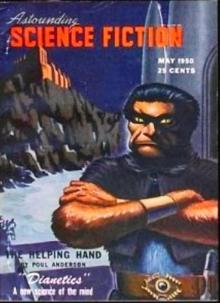 The Helping Hand
The Helping Hand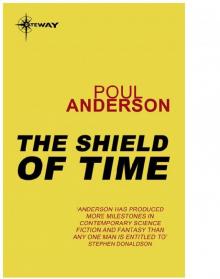 The Shield of Time
The Shield of Time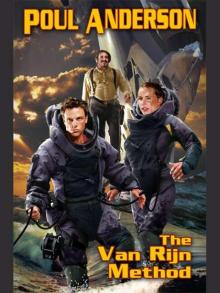 The Van Rijn Method
The Van Rijn Method A Circus of Hells
A Circus of Hells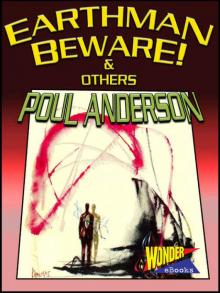 Earthman, Beware! and others
Earthman, Beware! and others Ivory, and Apes, and Peacocks tp-6
Ivory, and Apes, and Peacocks tp-6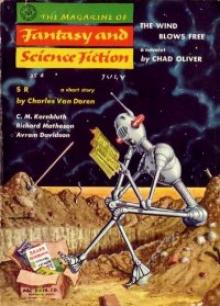 Life Cycle
Life Cycle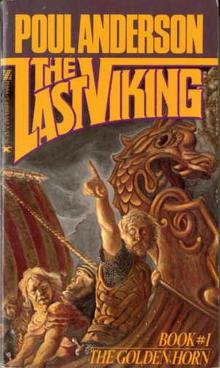 The Last Viking
The Last Viking Roma Mater
Roma Mater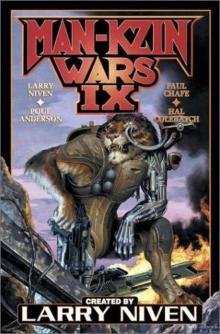 The Man-Kzin Wars 09 mw-9
The Man-Kzin Wars 09 mw-9 For Love and Glory
For Love and Glory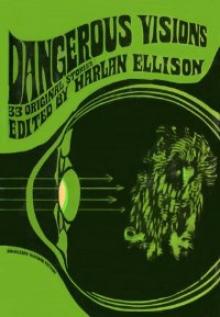 Eutopia
Eutopia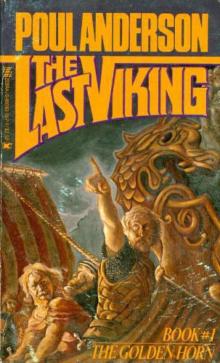 TLV - 01 - The Golden Horn
TLV - 01 - The Golden Horn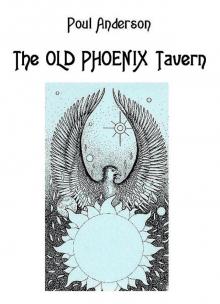 The Old Phoenix Tavern
The Old Phoenix Tavern The Long Night df-10
The Long Night df-10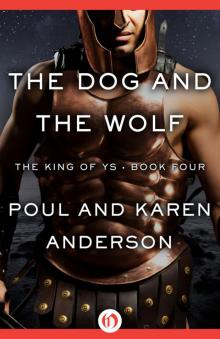 The Dog and the Wolf
The Dog and the Wolf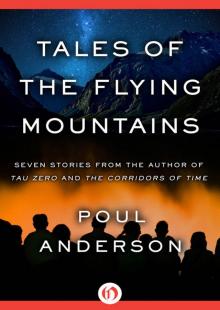 Tales of the Flying Mountains
Tales of the Flying Mountains There Will Be Time
There Will Be Time A Knight of Ghosts and Shadows
A Knight of Ghosts and Shadows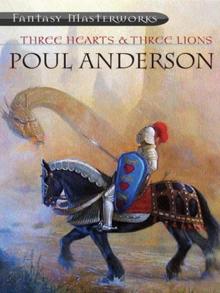 Three Hearts and Three Lions
Three Hearts and Three Lions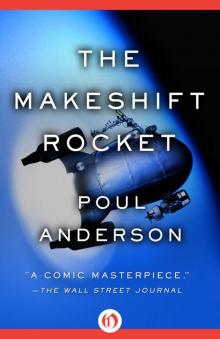 The Makeshift Rocket
The Makeshift Rocket The Dancer from Atlantis
The Dancer from Atlantis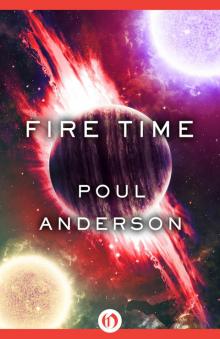 Fire Time
Fire Time